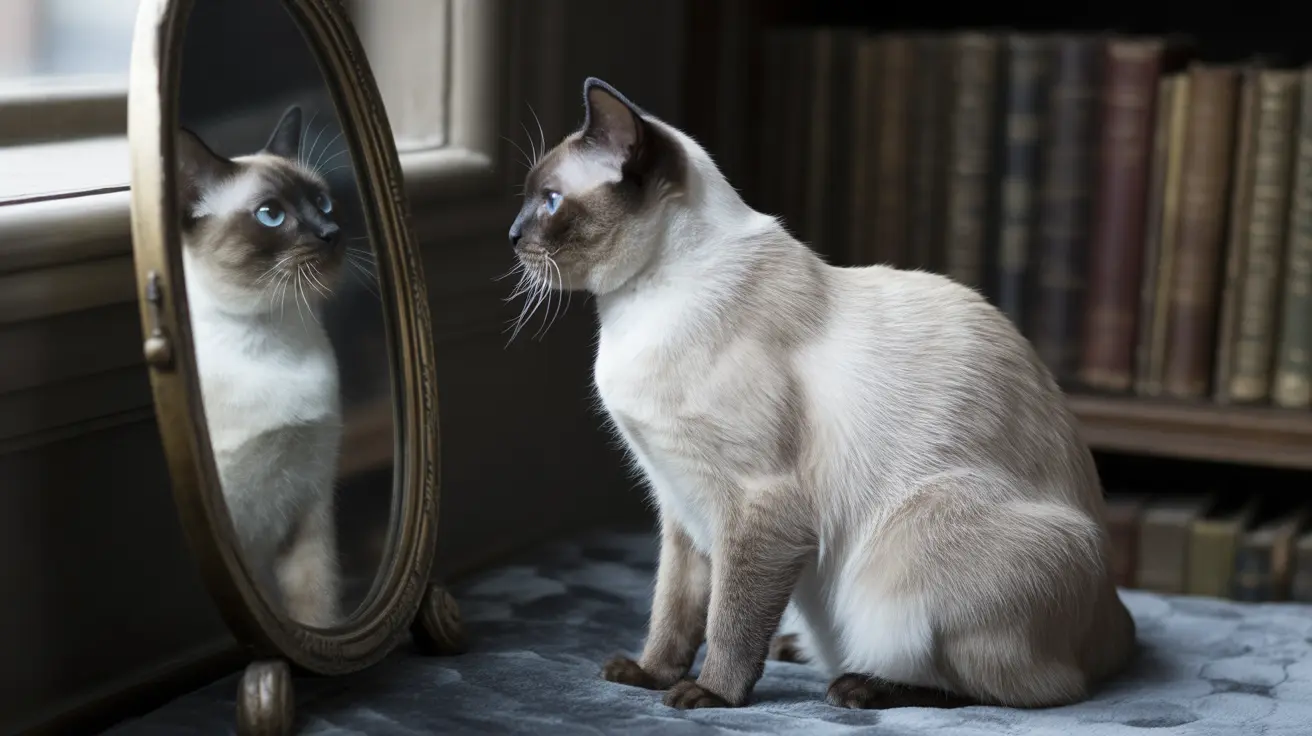The Natural Development of Cat Eye Color
All kittens are born with blue eyes, regardless of their eventual adult eye color. This initial blue shade isn't due to pigmentation but rather results from the way light scatters in their developing irises. As kittens mature, melanin—the pigment responsible for eye color—gradually develops in their iris tissue.
The transition to adult eye color typically begins around 6-7 weeks of age and completes by 3-4 months. During this period, you might notice subtle changes as the permanent color emerges. This process is entirely normal and shouldn't cause concern.
Genetics and Breed-Specific Eye Colors
A cat's final eye color is determined by complex genetic factors. The amount of melanin in the iris directly influences the resulting color: higher concentrations produce copper or golden hues, while lower amounts result in green or yellow shades. Some breeds, like Siamese cats, retain their blue eyes due to genetic mechanisms that prevent melanin accumulation in the iris.
Certain breeds are known for specific eye colors:
- Siamese and Ragdolls: Brilliant blue
- Russian Blues: Vivid green
- Maine Coons: Copper or golden
- Persian cats: Various colors, including copper and blue
When Eye Color Changes Signal Health Issues
While color changes during kittenhood are normal, sudden changes in adult cats' eye color can indicate serious health concerns. These alterations might signal conditions such as:
- Uveitis (inflammation of the eye's middle layer)
- Glaucoma
- Eye infections
- Trauma
- Systemic diseases affecting the eyes
Any unexpected change in eye color should prompt immediate veterinary consultation, as early intervention often leads to better outcomes.
Understanding Heterochromia in Cats
Heterochromia—the condition where a cat has two different colored eyes—occurs naturally in some cats, particularly white-coated breeds. This striking feature results from genetic factors affecting melanin distribution during early development. While usually harmless, it's important to note that white cats with blue eyes have a higher likelihood of deafness.
Frequently Asked Questions
Why do kittens' eyes change color as they grow, and when does their true eye color appear?
Kittens' eyes change color as melanin develops in their iris tissue. This process begins around 6-7 weeks of age and typically completes by 3-4 months, revealing their permanent adult eye color.
Can a cat's eye color change suddenly in adulthood, and what health problems might cause this?
Sudden eye color changes in adult cats are usually concerning and may indicate serious conditions like uveitis, glaucoma, trauma, or systemic diseases. Any unexpected color change warrants immediate veterinary attention.
What causes some cats to have two different colored eyes (heterochromia)?
Heterochromia results from genetic factors affecting melanin distribution during early development. It's most common in white cats and certain breeds, and is usually harmless unless associated with other health conditions.
How do genetics and breed affect a cat's eye color and its intensity?
Eye color is determined by multiple genes that control melanin production and distribution in the iris. Purebred cats often have more intense eye colors due to selective breeding, while mixed breeds typically show more variation.
Are certain eye colors linked to specific cat breeds or coat colors?
Yes, some breeds are known for specific eye colors. For example, Siamese cats typically have blue eyes, Russian Blues have green eyes, and Maine Coons often have copper-colored eyes. White cats are more likely to have blue eyes or heterochromia.
Conclusion
Understanding cat eye color changes helps distinguish between normal development and potential health concerns. While most changes occur naturally during kittenhood, any sudden alterations in adult cats should be evaluated by a veterinarian. Regular observation of your cat's eyes can help ensure early detection of potential health issues and maintain their ocular wellbeing.






